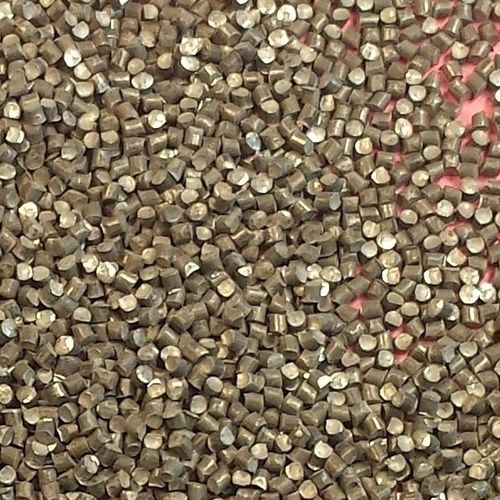
- Products
- Catalogs
- News & Trends
- Exhibitions
Granular steel wire
Add to favorites
Compare this product
Characteristics
- Shape
- wire, granular
- Diameter
Max.: 2.4 mm
(0.094 in)Min.: 0.4 mm
(0.016 in)
Description
teel cut wire is obtained by cutting high-content carbon steel wire into pieces having the same length of the diameter.
The chemical composition and the wire rod drawing process allow to obtain a wire having high traction resistance up to 2200/2400N/mm2.
It is remarkably different from other types of abrasives for sandblasting and from cast steel shot in particular, because grains have the same dimension and the same chemical-physical features.
Moreover, the nature of the material (drawn wire) and the production system exclude the presence of impurities and grains with inclusions, cavities, blowholes, cracks, etc.
Even if it has a cylindrical shape, this abrasive gets – during few working cycles – an initially spherical polyhedral and subsequently more and more spherical shape. Such shape is then kept, even if there is a progressive reduction in the diameter, for the whole life cycle without crushing events.
Features of a cut wire shot are resistance to wear, high abrasive power, capacity of generating and above all keeping a given roughness constant and, if suitably run in, capacity of producing “Almen effect” in the process called shot peening / peen forming.
Uses and Advantages
Pin shot offers the following advantages compared to other types of abrasives:
reduction in sandblasting time at the same required finishing degrees (SA 2 – SA 2,5 – SA 3);
reduction in abrasive consumption;
reduction in wear of the spare parts of the shot blasting machine;
reduction in dust in the plant deriving from abrasive;
white metal finishing.
*Prices are pre-tax. They exclude delivery charges and customs duties and do not include additional charges for installation or activation options. Prices are indicative only and may vary by country, with changes to the cost of raw materials and exchange rates.








